
Inspirations: Dragon Age, Star Wars, Sailor Moon, D&D, LOTR, Assassin's Creed, and Lovecraft.
Table of Contents:
Last edited:
Welcome to the Inner Sanctum!
We are an 18+ forum for writers and roleplayers of every genre. Whether you're a novice or a novelist, you've found your writing sanctuary here.
Review our rules, make an account and come see what the Sanctum has to offer!! For privacy reasons, some forums are not visible to guests.
If you have any issues verifying your account, please contact us
To prevent your account being flagged as possible spam, please disable any VPNs prior to registration.


| 6404 BCE: | The legendary eldarïni kingdom of Ëos is founded nearly three thousand years before the awakening of humans on the Galaxy. It is an empire of crystal magicks provided by the Morïquendi court of Mab and used extensively throughout the Empire. The Eldarïni are, at this point, immortal, a gift bestowed upon them by the excellent Aurora crystal in the hands of Queen Ëos, whom some eldarïni still worship as a goddess of light and magic. |
| It is said that Ëos had a husband from each of her seven courts, though their names differ significantly. | |
| 3100 BCE: | The Awakening of Man. Eldarïni essentially sees humans as children or pets. |
| 2850 BCE: | Eldarïni first notices the quickening, which puts an end to their immortality. They begin a racial cleansing of humanity within their borders, building powerful shields around their planets to keep out the humans. |
| 1195 BCE: | Darius I unites the human systems Boreas and Elysium, forming the mighty Boreas Empire. He declares himself the first Emperor. Before this event, only scattered fragments are known. Humans spread across the Galaxy - as various tribes of people known as the Hadian and the Poseidan. These started other tribes such as Heran and the Perespheian - but it is the Borean, centered on the planet of Creta, who became ascendant. |
| History records that eldarïni and humanity are hostile toward each other and that Boreas leads the way in aggressive retaliation against the eldarïni Millenium of Ëos. The eldarïni respond by retreating from human contact, and Boreas thus flourishes and spreads. The first "dreamers" learn magick from eldarïni captives, and these dreamers later become the first of the Empire's ruling magisters. | |
| 981 BCE: | Adaim and Evan, two human slaves, escape from the eldarïni city Hemerra and sneak into the palace of the Queen of Lights. Upon touching the Aurora crystal, it scatters into seven parts, sending shockwaves through the eldarïni planets. |
| 975 BCE: | The Human Magisters resort to a horrifying blood ritual that sinks pushes the stars of the Ëos systems into a massive supernova, destroying it utterly and deciding the war in their favor. Thus, the conquest of the eldarïni kingdom is complete: All those who do not perish with their planets are enslaved, their spirit crushed, and their ancient culture destroyed forever. The part of the Galaxy that was the Ëos-Millenium is now known as the Void, due to the many black holes. |
| 895 BCE: | The Boreas Empire expands rapidly, bolstered by its new eldarïni slaves. The Empire takes nearly all of the northern Galaxy and begins conquering lands across the Aegean Nebula. |
| 880 BCE: | The Boreas Empire settles the Moon of Estwick and fortifies its bay. The port is built for repairing warships. |
| 760 BCE: | Emperor Kalais ascends to the throne of the Boreas Empire. |
| 715 BCE: | The Boreas Empire begins several campaigns to subjugate the barbarous Heran tribes on Heran. After many near losses, they manage to hold the central area for a time and pave the Imperial Highway across the Brokeback asteroid field to the battle station of Aquilo. |
| 712 BCE: | The First Borean expedition against the Hermetican tribes in the Brokeback asteroid field. |
| 695 BCE: | The western part of Boreas rebels to form Dyionius, mainly populated by the Dyionians. |
| 692 BCE: | Emperor Kalais is assassinated. His apprentice, Khione, inherits the throne. Civil wars break out in the Boreas Empire. |
| 640 BCE: | Empress Khione dies without an heir. The civil war continues, and the magisters fight for power. |
| 620 BCE: | Hestia, the last of the great Imperial planets, is founded in the distant south of the Empire by the powerful magister, Hestia Trayvon. Eldarïni slaves were brought in by the millions to work the quarries and suffer hardships that would give the city a dark and bloody reputation. In time, it became known as the "Capital of Chains," the center of the Imperial slave market and the destination of all those captured by the spread of arcane rule. |
| Emperor Zetes claims the throne of the Boreas Empire. The end of the civil war in the Empire. | |
| 575-555 BCE: | The largest civil war of Boreas is usually cited as when it began to decline markedly from its golden age. The magisters of the various noble houses wield terrible power but still seek more; their competition with each other leads to human sacrifice, and demonic summoning becoming a regular occurrence. When two of the largest Borean houses battle to claim the emperor's throne, the Empire is almost split in two. The resulting war left ruins and battlefields where the magical taint continues to be felt to this day. Peace is brokered in the Senate to prevent the dissolution of the Empire, but the nobility continues its oppression of the masses to achieve supremacy. |
| 395 BCE: | According to Temple lore, the most powerful magister lords, seeking more power, attempt the Ritual of Seeding to gain godhood. The result is catastrophic: The planet of Hestia becomes tainted, and the magisters bring the Corruption into the world, creating the first Remnants. |
| The Old God Oreithyia is freed and transformed into the first Mad God. The First Plague begins. The Remnants attack en masse, concentrating at first on the Court of Mab of the Morïquendi. | |
| 370 BCE: | The Morïquendi court begins to fall, and the race is at the brink of collapse, saved from destruction by the actions of Paragon Phaenon. The Remnants use the Void to appear throughout the Galaxy. All of the Empire is under siege and in a state of chaos. Finally, the nations of the Empire begin to settle in for a long war as they become accustomed to the surges of the Remnants. Communication becomes difficult across the Empire, but cooperation is paramount. The people of Boreas pray to the remaining Old Gods for help against Oreithyia, but they receive only silence. With the people's faith waning, unrest sees many churches destroyed as the Imperial people turn from the Old Gods, believing themself betrayed. The dark period lasts for over 200 years, extending post the Plague. |
| 355 BCE: | The Remnants has yet to reach the Heran. They are instead caught up in a war with the Hermeticans. In the Battle of Red Snow, Hermetican warrior Laomedon Morïquendison fights Raveena, Heran warrior queen. Both die in the battle. The Order of the Shattered Sword is founded in Morïquendison's honor. |
| 203 BCE: | The Order of the Shattered Sword gather the forces of humans and confront Oreithyia at the colossal Battle of the Cruel Plains in the southern reaches of Boreas. Oreithyia is ultimately destroyed by the Order and the Remnant forces routed. Though the Remnants are still prominent in their numbers and still battle humanity, they are no longer directed by Oreithyia's power and become scattered. The contracts ensuring the powers and rights of the Order of the Shattered Sword date from this year. |
| The prophet Miriah is born in the Heran system. However, scholars hotly contest the exact planet and year of her birth. | |
| 195 BCE: | Slowly, the last of the Remnant hordes are defeated. After centuries of fighting, the once-mighty Empire is now weak. |
| 187 BCE: | Miriah marries Yusuf, a Heran chieftain. |
| 186 BCE: | Miriah preaches of a new creator, whom she calls the Goddess. The more she says, the more her following grows. Finally, Yusuf uses her teachings to unite the Heran clans under his authority. |
| 184 BCE: | The Boreas Empire's influence recedes in the southern Galaxy as Creta rebuilds. |
| 180 BCE: | A massive horde of Herans led by the warlord Yusuf and Miriah cross the Aegean Nebula to invade Boreas. Natural disasters and slave rebellions help their advance. The Boreas Empire abandons the moon of Estwick to focus on main planet troubles. As a result, the moon remains largely uninhabited for ages. |
| 171 BCE: | West of Creta, the Battle of Valarian Field is fought between the Herans and the Boreas Empire. Yusuf is victorious. At that battle, the eldarïni slave Mëmnone takes Yusuf's side and leads other eldarïni to fight against their Borean oppressors. He later converts and is made a disciple, only to have his writings suppressed following the Crusade of the Briar system. Finally, the Heran army led by Yusuf and Miriah stands before the gates of Creta and prepares for the battle to come. |
| 170 BCE: | Yusuf makes a pact with Empress Pnoia of the Boreas Empire in exchange for a truce and promise of lands. However, he betrays Miriah on the planet of Valerian, one of their strongholds, and allows her to be taken to Creta for execution. While Miriah burns at the stake, Empress Pnoia takes pity on her and stabs her through the heart. |
| 165 BCE: | After the death of Miriah, the barbarian army disperses. Yusuf is granted the lands of the southern Galaxy. He keeps the Heran System for himself while dividing what will become Notos, the system of Ganymedes, and The Free Planets between his three sons. The land between the Aegean Nebula and the Brokeback asteroids is given to the freed eldarïni by Yusuf as a homeland and is called the Briar system. The Long Pilgrimage begins as eldarïni from across the Empire starts traveling to the Briar system and is preyed upon by disease and robbers, causing massive chaos. |
| 160 BCE: | A cult devoted to Miriah's teachings spreads rapidly in the south but is mainly disorganized and unpopular with the churches of the Old Gods. However, Empress Pnoia converts from revering the Old Gods to the Cult of the Goddess and reveals Yusuf's treachery. As a result, the Herans abandon Yusuf, and the southern Galaxy collapses into anarchy. Back in the barbarians' system, groups claiming to be the Disciples of Miriah are formed, and the new religion begins to grow, referred to collectively as "the cults of the Goddess." Finally, Empress Pnoia converts the Boreas Empire to Miriahism, starting the Conversion. |
| 130 BCE: | The Bible is created by Miriah's disciples, collecting her story and her teachings into hymns. Numerous versions of the Bible are written over time, with different interpretations of what Miriah taught about the Goddess, each prevalent in different regions. |
| 125 BCE: | Empress Pnoia dies in her sleep. Many in the eastern and southern provinces of the Boreas Empire push for secession, fearing her successor, Emperor Hekaerge, will restore the Old Gods and their clergy. |
| 120 BCE: | Rebellion begins in the east as the Poseidan attempt to split off from the Empire. The resulting campaigns to stop the uprising distract the Empire from its attempts to reconquer The Free Planets and allow the south to gather its strength. As a result, many of the eastern planets in The Free Planets intervene on behalf of the Poseidan. |
| 53 BCE: | After several losses that culminated in the disastrous Battle of Tamlïn, the Empire finally abandons the east. |
| 44 BCE: | The Republic of Poseidan is formed. |
| 30 BCE: | The kingdoms of Hermeticus expand and becomes a unified system. |
| 25 BCE: | As the borders of the Empire recede, Hestia becomes one of their lone outposts within a distant and violent frontier. The planet is surrounded by the system of Zephyros, the barbarian Free planets, the Herans, and the new eldarïni homeland of the Briar system. Despite its isolation, the Empire fought off many invading armies and did not fall until the slaves within the planets finally rebelled, executing their Borean rulers in an orgy of violence. Possession of the fortress planet remained contested for centuries to come, but it would never again rejoin the Empire. No longer under Borean rule, the system changed its name to Syrac and became part of the Free Planets. |
| 11 BCE: | The cults of the Goddess spread quickly in the southern Galaxy, resulting in the commencement of construction of the first great temple on Thanalem, which becomes the center of worship for the new faith. One of its most fervent followers is the young King of Notos, Erikhthonios II, the Red Drakon. The Red Drakon begins a series of holy wars in the name of the Goddess, quickly proving himself to be one of the greatest generals in history. |
| 3 BCE: | Having conquered several neighboring free planets and forced others to submit to his overlordship, the Red Drakon is crowned emperor of the new Notoian Empire on Thanalem. However, his ambitions to spread farther north into the Free Planets are confounded by constant pressures from the Briar system to the east. |
| 0 AD: | Emperor Erikhthonios form the Temple as he formalizes the Goddess's cult as an official religion. The emperor commands that missionaries be sent forth into the other planets, thus spreading the Temple's teachings. |
| 1 AD: | The first Grand Matron of the Temple, Juno I, is instated at the still unfinished Grand Cathedral in Thanalem. The free use of magicks is declared illegal in Notos except by those operating under the direct auspices of the Temple or the Order of the Shattered Sword. |
| 5 AD: | Khloris is released, and the Second Plague begins in the Zephyros system with Remnants slaughtering the entire planet of Xanthos before the Order of the Shattered Sword finally gets the word out. Now, rather than the Remnants coming primarily from the north as they did before, they come out of the black holes in all corners of the Galaxy. Once again, mankind is launched into a desperate battle for its survival for the next 90 years. Emperor Erikhthonios calls on witches to use their magic against the Plague. The witches prove themself to be influential allies in battle. The Boreas Empire abandons Zephyros and attempts to protect itself, a betrayal that the Zephyrians remember even to this day. |
| 16 AD: | In several engagements, including the hard-fought victory at the Battle of Balios, the Notoians defeat several hordes of Remnants, and numerous planets are saved. However, the Notoian Empire under the Red Drakon's command expands quickly, as does the influence of the Temple. |
| 25 AD: | The people of Notos are angered when the planet of Auster is nearly destroyed by the Remnants as an eldarïni army watched from nearby. |
| 31 AD: | The Remnant horde fails to overrun the Borean capital planet, Creta. |
| 33 AD: | Emperor Erikhthonios is allowed to expand northward, but instead, he chooses to swing his armies west and relieve the siege of Areion. The Order of the Shattered Sword is impressed enough to convert to the worship of the Temple, and together the Order of the Shattered Sword and the Red Drakon save the badly weakened system of Zephyros from destruction, making it a part of the Notoian Empire and bringing it to devout worship of the Goddess that continues to this day. However, throughout the Second Plague, the eldarïni of the Briar system refuse to provide aid to their neighbors. |
| 45 AD: | Emperor Erikhthonios perishes from old age in Aithiopia. Unfortunately, his Empire, forming most of the western Free Planets and all of Zephyros, does not survive his death. |
| 65 AD: | Zephyros once again declare their independence, this time from the Notoian Empire. |
| 95 AD: | The Free Planets and Notos are hard-pressed to defend themselves, but the Order of the Shattered Sword and the Notoian armies make the difference. The last battle of the Second Plague is fought on Alejandrar of the Free Planets. The human army is led by the Order of the Shattered Sword and takes a resounding victory, where Khloris is finally destroyed and the Remnants routed. |
| 105 AD: | Increasing hostility between eldarïni and humans results in numerous border skirmishes between the Briar system and Notos. |
| 109 AD: | Finally, the eldarïni forces attack the Notoian moon of Nemesis and quickly take it over. The atrocities they are said to have committed there against the villagers and the town's Temple enraged humans across the system. |
| Notos immediately went to war with the Briar system but was initially surprised by the ferocity of the eldarïni response. A quick Notoian victory was not going to happen. | |
| 110 AD: | In the Ganymedes system, Baron Eron declares himself King. A civil war begins in opposition. |
| 110-120 AD: | With eldarïni forces having captured Auster and marching on the doorstep of Thalalem, Matron Persegan I calls for a holy war against the eldarïni. This becomes known as the Crusade of the Briar. Unfortunately, while the eldarïni eventually sack Thalalem in 114 AD and push well into the human system, Astraea is conquered, and the eldarïni are entirely crushed by 120 AD. |
| The planets of the Briar system come under Notoian control, with eldarïni settlements being uprooted and worship of the eldarïni religion illegalized. The eldarïni are forced to either live with mankind under their rule or wander as homeless vagabonds. | |
| 130 AD: | By far the most prominent structure in Astraea, the Dawn Palace becomes a regular seasonal retreat for the empress and selected Notoian nobility. |
| 134 AD: | Following the defeat of Khloris in 95 AD, there is general support of building fortified headquarters for the Order of the Shattered Sword. The star fortress of Laomedon in the Ganymedes system is finished after a decade of construction. |
| 180 AD | Alejandrar is freed from Borean rule during a crusade, the second in less than a century. |
| 199 AD: | The Grand Cathedral in Thalalem is completed, its two towers visible from miles around. |
| The same day, Emperor Aellopos of the Boreas Empire is stabbed to death by one of his eldarïni servants, Leonius, in an underground corridor beneath Palpatinus Hill, Creta. |
| 209 AD: | The Right of Annulment is invoked for the third time since its inception. The witches of the Coven of Hermeticus are put to the stake. After reports that the Right of Annulment might have been invoked to cover up a massacre by a serial-killing priest, the Hermetican Assassins are hired to eliminate the highest members of the Hermetican Temple. |
| 210 AD: | The Old God Phoinix awakens, and the Third Plague erupts in the central systems of the Galaxy, with Remnants coming in greater numbers than ever before. Remnants swarm the Borean planets of Nikothoê and Celaeno and the Notoian planets of Potnia and Auster. |
| The Order of the Shattered Sword in both of these empires can quickly organize a defense, and despite heavy losses in the besieged planets, the Remnants are pushed back. | |
| 218 AD: | Remnants ravage the Free Planets. At first, the Notoians and Boreans do nothing, but constant pressure from the Order of the Shattered Sword convinces both nations to send aid to the beleaguered planet-states. |
| 225 AD: | The armies of Notos and the Borean Empire meet on Thena and join the Order of the Shattered Sword in the last battle of the Third Plague. |
| Phoinix is destroyed, and the Remnants are slaughtered in one of the bloodiest battles in history. The Remnant carcasses are piled into mounds as high as 100 feet and then burned. The people of the Free Planets will not soon forget the image of the burning Remnants. | |
| Their goodwill is quickly crushed by the victorious armies as they decide to occupy the territories liberated from the Remnants. Notos takes the planet of Pollon, while Boreas takes Thena. | |
| 249 AD: | Thena breaks away from the Borean Empire. |
| 265 AD: | Pollon achieves independence from Notos. |
| 287 AD: | After learning that the Imperial Temple has been preaching that magicks best serve man by ruling over him, Matron Persegan II demands that the Boreas Bible be revised to conform to the Notoian Bible, which states that "magic must serve man, and not rule over him." She declares the Boreas clergy heretics when they refuse. In response, the Borean Emperor appoints Grand Magister Kelainô, a man and a magister, as Patron of the Borean Temple. In the south, he is widely reviled and dubbed the "Malefic Patron." |
| In the Ganymedes system, the local Coven moves to Hymenaios Hold after the original tower on Aquarius is razed. |
| 300 AD: | Werewolves, long present in Median lore, are said to reappear, assuming the appearance of regular people. The use of dogs as guards able to "detect" werewolves becomes common. An incredibly bloody chapter of Ganymedes' history ends with the apparent extinction of the creatures. |
| 322 AD: | The Hermetican King Qin the Younger meets his end at the hands of Yuwei, a soon-to-be-legendary member of the Hermetican Assassins. During one of the King's tours of eastern Hermeticus, the eldarïni Yuwei struck the King with his spear, killing him. |
| 340–410 AD: | The Temple declares a series of four crusades to destroy the "heathens" within the Boreas Empire. All four times, large armies are gathered from around the Temple's domains, and an assault is launched deep into Boreas. Every time, however, the Crusade falls just short of its goal of conquering Creta. In the end, the crusades serve simply to cement the separation between Creta and Thalalem. As a result, the Imperial Temple starts to form its own dogma and policies, and the groundswell of witches fleeing from southern systems into Boreas bolsters the Empire's waning power. |
| 345 AD: | The most famous eldarïni criminal in Notos, Munët, is arrested for slaying twelve chevaliers. However, she escapes and kills twenty more before cutting her throat to avoid capture. |
| 380–384 AD: | The Notoian Empire takes advantage of Ganymedes' fractured state and crosses the Brokeback Asteroids to invade the system for the first time. However, the Median Barons set aside age-old differences to push the Notoian Empire back. The Notoians hope to take the moon of Silvera, but the star fortress of Longlake holds out too long, and radiation in the Brokebacks leaves many Notoian units without supplies. By the spring of 384, most of the invaders pull out or are captured. |
| 410 AD: | The Last Crusade on the Borean Empire ends in retreat for Notos. |
| The Order of the Shattered Sword sign treaties with the various Median barons, build a fortress on Eron, and several small outposts to watch for signs of Remnants. | |
| 412 AD: | The eldarïni remaining in the Briar system attempts a Ritual of Awakening, trying to resurrect the lost Queen Ëos. The ritual fails, and they create a dark reflection of the former queen, naming itself Erebos. |
| The Crusades against Boreas end with the awakening of the Mad God Erebos and the outbreak of the Fourth Plague. Remnants appear in significant numbers in the northeast and northwest of the Galaxy. | |
| Remnants overrun the System of Hermeticus. The Order of the Shattered Sword arrives to evacuate Hermeticus Prime, but the royal family refuses to leave. The Hermetican Royal Guard rebel and kill King Eleusis before the Knights stop them. It is publicly reported that the Remnants killed him. | |
| The Knights evacuate the surviving royals and court members via spaceships. As they retreat, they are attacked by the Mad God, and the surviving royals are killed along with most of the Knights. | |
| The Remnants pour into the Free Planets and Poseidan. | |
| The Plague rises in the Zephyros system as well, and the capital planet of Zephyros comes under siege. | |
| Notos and the Borean Empire are attacked by fewer numbers and can drive the Remnants back into the depths of the Void. However, despite their success, Boreas refuses to send any aid to the Free Planets or Zephyros, while Notos sends only a token force. | |
| 420 AD: | The Knight of the Shattered Sword, Gäraniel, leads an army of Knights and Zephyrians and breaks the siege of Zephyros Prime. |
| 421 AD: | Remnants all but devastate the Free Planets. A refuge known as the Retreat is dug into the Brokeback asteroids. At the direst point of the Fourth Plague, hundreds of fleeing Syrac and Akka residents call the Retreat home. |
| 422 AD: | Gäraniel gathers Knights from Notos and Zephyros and marches to Alejandrar. On Alejandrar, Gäraniel organizes an alliance between the leaders of the Free Planets. As a result, a united army marches north, led under the banner of the Order of the Shattered Sword. |
| 424 AD: | Hermeticus is freed from the Remnants during the infamous battle at the planet of Aithalides, where Gäraniel dies upon slaying the Mad God Erebos. So many Remnants are slaughtered in the fight that it is considered certain that they will never return. That the Plague continues to be felt in the Void by the Morïquendi is largely ignored by most except the Order of the Shattered Sword. Most are eager for the war to end and for regular trade to begin. |
| Alara Valmont, a young Notoian captain, is declared a hero by King Azar of Hermeticus for coming to the rescue of the Hermetican army during the Battle of Aithalides. Alara weds one of Azar's sons, and the Valmont family is elevated to nobility. Upon returning home, the Notoian emperor is forced to match Azar's honors by granting Alara a marquisate. | |
| 437 AD: | The first king of the Pollonian Van de Kampf family, Tylerius Van de Kampf, is crowned after having claimed to be a descendant of Erikhthonios's son, killed on Akka and killing the ruling King. Being a hero of the recent Plague, Tylerius is able to stir nationalistic feelings in the western Free Planets against the growing power of Notos. He proves his military might by winning several major battles against the Notoians, establishing Pollon as a new, growing power. |
| 438 AD: | King Tylerius turns the western Free Planets against the growing power of Notos. He wins several major border wars against the Notoians, expanding Pollon into a proper system. |
| 442 AD: | With the crowning of King Galen on Ganymedes Prime, the various warring factions of Persespheians are at last united under a single banner to form Ganymedes. What had always been considered a system of wild, nomadic barbarians was finally a nation in its own right, though considered primitive and backwater by most. |
| 499 AD: | Queen Myrtilos of Hermeticus, is assassinated on a tour throughout the system. True to the slow nature of the poison, Myrtilos withered away over several days until she finally perished. |
| 530 AD: | The Nyanko land in Al-Voilenn, then loosely controlled by the Borean Empire, and conquer it quickly, unbeknownst to the rest of the Galaxy. |
| 532 AD: | Word of The Nyanko invasion finally reaches the Galaxy when Nyanko ships begin to land en masse on the coasts of Hefaistion and northern Poseidan. The Nyanko Wars begin and last for the remainder of the century, and most of the next one. |
| 535 AD: | The Hermetican planet of Sikoyinia is conquered by The Nyanko. |
| 542 AD: | The Nyanko's initial advances are significant: they have conquered much of the Borean Empire, Poseidan, and Hermeticus and begin to assault the Free Planets and force all they conquer to convert to the Dajjal. |
| Only Creta itself remains besieged but unconquered in the north. | |
| 550 AD: | The Heran organize forces under the great warlord Balakk and sweep into the heart of the Ganymedes System in massive numbers. Ganymedes Prime is put to the torch. |
| 552 AD: | The Herans are pushed out of Ganymedes proper. The period results in one of the worst famines in Median history—memories of Heran savagery sour relations between the barbarians and Median kings for ages. |
| 585 AD: | The humans have organized themselves and pushed back hard enough that massive rebellions in Boreas manage to free the Empire, and The Nyanko lines begin to crumble. |
| 590 AD: | The Nyanko besiege the planet of Aethon. The appearance of a drakon, rumored to be called by a witch, ends their effort and forces them to retreat. |
| 605 AD: | After losing the Median throne to her cousin, Arlandus, Sofjian joins the Order of the Shattered Sword and rises to the rank of Knight-Commander in Ganymedes. |
| Arlandus is considered by many to be a tyrant. Nobles approach Sofjian, asking her to intercede. She accepts and attempts a coup against her cousin using the Knights of the Shattered Sword. After the bloody Battle of Laomedon, Arlandus declares himself victorious with Sofjian killed. The Order of the Shattered Sword is expelled from Ganymedes and Laomedon is abandoned. | |
| 623 AD: | The Nyanko are pushed back to Hefaistion and Poseidan, but they are well entrenched. |
| The Battle of the Nocean System is the largest galactic engagement in history and results in a stalemate and the destruction of many of the ships on both sides. | |
| With both sides exhausted, an impasse begins. | |
| 625–685 AD: | The Crusades on The Nyanko is declared by both the Imperial Chantry - to retake Hefaistion and the eastern planet of Syrac - and the Notoian Temple - to retake Poseidan. |
| During the Crusades, Notos manages to steal the Qareen (Tome of Al-Masih) from The Nyanko. | |
| 628 AD: | A drakon cult following the rampage of the High Drakon Cychreus devastates the northern Free Planets until the drakon is slain by a group of militiamen. |
| 634 AD: | Emperor Kanabos is elected directly from the ranks of the Magisters. He overturns the old rules forbidding witches from taking part in Borean politics. |
| 644 AD: | The newly crowned emperor of the Notoian Empire, Freyanar, allows women to become knights after witnessing the death of Sir Haemus, the Knight of Notos. |
| 652 AD: | The second Crusade ends in a disaster, as The Nyanko capture much of Hermeticus. |
| 654 AD: | The Nyanko land on Estwick and use it as a launching point for fleets of dreadnoughts. |
| 655 AD: | Raiders from the independent moon, Larissa, unite under the banner of the Galatea Armada. Together, their pirate fleets help turn the tide against The Nyanko fleet. |
| A third and final crusade on The Nyanko is called. | |
| 656 AD: | The Nyanko, although on the retreat, manage to gain a foothold in the Free Planets by landing near Ostara and launching assaults against Alejandrar and Syrac. Alejandrar prevails, but Syrac falls to the sorceries of the Da'jinn in a daring night-time raid and is occupied for several years. |
| 682 AD: | The Daphnea family takes over Pollon from the rival Van da Kampf family. In order to secure their border with Notos, they approach Astraios IV with an offer of marriage. The emperor leaves his current wife of 17 years as she hasn't produced him an heir, and marries Princess Sotiria Daphnea. However, the Pollonian bride also fails to produce him an heir, and he forces her to join a convent. Pollon sends soldiers into Notos, but only to retrieve the princess; they do not start a war with the Empire. The princess marries another Notoian by the name of Gustave Hyakinthos, and adopts his son, and names him Aurelian Daphnea. |
| 684 AD: | By the end of the Third Crusade, The Nyanko have only one stronghold left in the Galaxy: the planet of Despione. |
| By then, rebuilding all the destruction caused was considered more important than trying to dislodge The Nyanko from Despione once again. A meeting between envoys of all the human systems (except for Boreas) and The Nyanko at Larissa results in the signing of the Larissan Accord and peace being declared. | |
| Peace is not established between the Borean Empire and The Nyanko, though skirmishes are few while The Nyanko pull back to Al-Voilenn and rebuild. | |
| 688 AD: | The Temple names king Catamitus a saint for spreading the Religion of the Goddess to the entire system of Ganymedes. |
| 710 AD: | In a grand gesture, the Nyanko on Al-Voilenn welcome a group of Poseidan diplomats. The visit dispels many myths about Dajjal society. |
| 724 AD: | The Notoian Empire, under the direction of the "Mad Emperor" Astrileux, launches the Second Notoian Invasion of Ganymedes. Thanks to the clandestine support of a number of powerful barons undermining Median defense, Notos quickly establishes a strong foothold. |
| 725 AD: | Though King Valerian XI is succeeded by his son, King Ba'ariel I, the youth cannot unite the system beneath him, and for the next two decades, Ganymedes is mired in blood and battle. |
| 744 AD: | The Notoian Empire finally sacks the planet of Ganymedes Prime, claiming victory in Ganymedes and driving King Ba'ariel into hiding. |
| Though routed, the King and others among the true Median nobility continue to wage guerrilla war against their oppressors. When Ba'ariel finally dies, several years after the birth of his grandson Melkoriel I, Notos crowns Moghrenn as King of Ganymedes, though Ba'ariel's daughter, "the Rebel Queen" Moirraa - considerably more popular and charismatic than her father - keeps the resistance alive. | |
| 747 AD: | Emperor Astrileux, fearing the court turning favor toward rival Grand Duke Gwatienne, has Gwatienne, his wife, three grown children, and all eight grandchildren murdered. The youngest, Anastasia, is only eight months old. |
| 751 AD: | Emperor Astrileux dies after spending more than a year locked in his room, fearing retribution for his assassination of the Gwatienne family. His son, Erikhthonios XI, is crowned the Emperor. |
| 755 AD: | War between the Nyanko and the Borean Empire continues as the Nyanko land and conquer Hefaistion within three years. Boreas is left on its own to fight its war with the Nyanko, though the peace between the Nyanko and other systems is considered fragile. |
| Several attempts by the Nyanko to land in the Boreas system and attack the Empire directly are repulsed. | |
| Emperor Erikhthonios XI of Notos dies. His brother, Judicael V, is crowned the new Emperor. | |
| 770 AD: | A war between Pollon and Notos over the control of the western field around Aristaios results in a Pollonean victory. However, Notos proceeds to sow dissent and rebellion among the locals on Aristaios, who resent Pollonean rule. |
| Emperor Judicael V dies. His son, Judicael VI is crowned the Emperor. | |
| 776 AD: | In the coldest winter in centuries, Adaim of Syrac escapes from the Coven. |
| 777 AD: | The Hundred Days Cough epidemic begins in Notos; it claims the lives of the twin sons of the Emperor Judicael VI and the infant daughter of his brother Florienne. |
| 782 AD: | Pollon begins a bloody campaign of conquest within the Free Planets, encouraged by their taking of Aristaios. They are stopped by Cade Maddoxx, who is named Champion of Syrac for his deed. |
| 784 AD: | After Emperor Judicael VI dies during a fox hunt, his brother Florienne ascends to the throne of Notos, much to his chagrin. |
| 795 AD: | A witch in Hermeticus shouts a prophecy about the impending return of the drakons. |
| 796 AD: | Moirraa the Rebel Queen is assassinated by Baron Cedric and several other traitor nobles at the behest of the Notoian King Moghrenn. |
| 798 AD: | The Median rebels, led by the young Prince Melkoriel, take the isolated port station of Gawaren V, their first major victory since the death of Queen Moirraa. |
| House Tërranus is exiled from the Void for denying the Voice of the Ancients and willfully manipulating the sacred Evincings. | |
| 799 AD: | At the battle of Kallirhoe, the Median rebel army is devastated by the royalist forces. Survivors retreat to Gawaren V. Melkoriel is presumed dead. |
| With the aid of the Legion of the Dark Ones, Prince Melkoriel emerges from the Void under Gawaren V and wins an important battle, and is coming much closer in liberating Ganymedes than he or his mother ever did. Afterward, he also kills Baron Cedric and the other three nobles who betrayed and killed his mother. | |
| Believed hunted to extinction, drakons emerge first in Hermeticus, then devastate rural Notos and Pollon. Another drakon is also sighted in the Notoian side of the Brokeback asteroid field, just before the battle of Starr'dane. | |
| At the Battle of Starr'dane, the last two legions of chevaliers that the Emperor sent to the occupied Ganymedes are defeated by the rebels. |
| 800 AD: | Led by the young Prince Melkoriel, the Median rebels finally succeed in driving out the Notoian occupational force. Melkoriel kills the usurper King Moghrenn in a duel at Fort Drakonea. |
| A short time later, Hermeticus is shaken by civil war and the much-maligned "Three-Queens Era" begins. | |
| The ruling Emperor of Boreas faces usurpation. | |
| 803 AD: | Melkoriel is crowned King of Ganymedes. |
| 810 AD: | In the center of Ganymedes, the intelligent Remnant known as the Draughtsman attempts to awake the remaining Old Gods and taint the Galaxy. His efforts are thwarted by King Melkoriel and a band of Knights of the Shattered Sword. |
| King Melkoriel allows the Order of Shattered Sword to return to Ganymedes after two centuries of exile. | |
| 812 AD: | The Sultan of the Nyanko navy launches an offensive on the Boreas central system with a fleet of warships, and the entire Da'jinn is sent with them as a landing force. The Sultan's campaign makes excellent progress, but his headway disappears when legions of Borean soldiers and Magisters retaliate in force. The Nyanko footholds in Boreas are obliterated in the counterattack, and the Sultan is forced to withdraw the fleet to Hefaistion. The defeat shakes the entire populace, but none take it harder than the Sultan himself, who resigns his role and returns to Al-Voilenn to be Sultan no more. |
| 814 AD: | Perrinthus VI succeeds his father, Chivalry XXI, as King of Syrac. |
| 820 AD: | Ganymedes and Notos officially make peace after the ascension of Empress Celina to the Notoian throne. |
| Pollon invades Notos and seizes the moon of Pommed'or circulating Ghislain. Grand Duke Caspard de Hhalons leads the Notoian defense, eventually driving the Polloneans out of Notos. | |
| 821 AD: | After a failed attempt to oust the influential Order of the Shattered Sword from the planet, King Perrinthus VI is executed, and Delphi I is appointed King of Syrac. Due to her part in the arrest of King Perrinthus VI, Meredia Hiero is promoted to Knight-Commander of Syrac by Grand Master Nemea. |
| 822 AD: | Beldames, secretly in league with a rogue Grand Cleric of the Notoian Temple, conspire to assassinate Matron Beautrix III. A Knight of the Shattered Sword thwarts the conspiracy and is named Hero of Notos and the Matron's Right Hand, starting the bloody inquisition of the Notoian Temple. This day is remembered as the "The Day of Black Skies." |
| 825 AD: | King Melkoriel of Ganymedes is thought lost in space and imprisoned by Hermetican Assassins. |
| Melkoriel 's son, Caylann, inherits the throne of Ganymedes. | |
| The Nyanko elevate a new Sultan, Rak ag-Nok after the previous one died during a campaign on Hefaistion. | |
| 827 AD: | Magister Urion Nehalenas and a group of co-conspirators among the Imperial Temple and the Magisterium ousts the ruling Malefic Patron. Nehalenas becomes the new Malefic Patron afterward. |
| 832 AD: | The eldarïni slaves of the Damasque Alienage revolt against their owner; many eldarïni are killed. |
| 840 AD: | Empress Celina is called out of Thanalem after news of an eldarïni rebellion in the Briar system. The move is thought to have been orchestrated by Caspard. Celina's absence fuels rumors of her death or capture. |
| Anticipating unrest, the Sun Gates to Thanalem are ordered closed for the first time since drakons attacked the city in 822 AD. | |
| Caspard de Hhalons returns to Thanalem to resume the civil war; the missing Empress Celina reappears at the Dawn Palace in the Briar system and begins to marshal her own forces. | |
| A violent uprising at the Thanalem Coven leaves many senior witches dead. The Matron supports the rebellion through her agents. | |
| Following the conflict at the Thanalem Coven, allegiances amongst the Temple and witches are split. Some still support the Matron. | |
| The covens in Poseidan are put to the stakes. | |
| The Thanalem Coven tries to separate itself from the rule of the Notoian Temple, but the inquisitors kill anyone (witch or priest) who supports the idea. | |
| 858 AD: | Patron Nehalenas, Grand Magister of the Magisterium in Boreas, passes away and is succeeded as Patron by Nehelenarr. |
| 865 AD: | Nyanko leader Rak ag-Nok is captured and executed in a pit of snakes by King Aellarr of Syrac. |
| 867 AD: | King Aellar of Syrac is executed in a blood ritual by the Da'jinn in retaliation for the execution of Ragnar Rak ag-Nok. |
| 871 AD: | Patron Nehelenas, Grand Magister of the Magisterium, passes away. His brother, Alfered, succeeds him as Malefic Patron and, reluctantly, as Grand Magister of the Magisterium. |
| 872 AD: | On the advice of the Knight of the Shattered Sword Bounos Ibn-Ishtaq, select members of the Coronis Clan leave the Nyanko's endless wars and lack of resources and travel to Estwick. |
| 873 AD: | The Coronis Clan arrive on Estwick, where they established the settlement of Corvus Major from the remnants of an abandoned settlement from the Borean Army. |
| A Knight of the Shattered Sword attends a ball held by Empress Celina I at her Dawn Palace in the Briar system after learning of an assassination plot against her. The Knight's actions resolve the Notoian Civil War and with Celina on the throne once more. | |
| 875 AD: | Frei Ibn-Abdah of the Coronis Clan travel to an unknown planet called Vhanteros, otherwise known as Saint Beroe's Land, where she assassinates Magister Gorm. There, Frei recovers a Crystal Ball from his personal effects and later gives the artifact to Melïan of the local eldarïni. |
| 877 AD: | Frei and Tyr Ibn-Abdah return to the Nyanko, where they uncover the Dra'sil Chamber. They experience a simulation of life, making them believe they are the reincarnations of the old gods Oreithyia and Khloris; Frei eventually rejects Oreithyia and convinces her brother to abandon the simulation. |
| Bounos Ibn-Ishtaq, the believed reincarnation of Phoinix, attacks Frei after deducing she is the reincarnation of Oreithyia. Frei defeats Bounos in combat with Tyr's help and leaves him trapped inside Dra'sil's simulation device. | |
| 878 AD: | Frei and Tyr Ibn-Abdah and their allies fight in the Battle of Eryx to weed out Patron Alfered and kill him. Alfered escapes, but the Nyanko are victorious. |
| Frei successfully wipes out the Magisterium in the Hefaistion system with the help of the reluctant Grand Magister. In the Magisters' wake, Alfered vows to establish a new order, which would become the new Magisterium. | |
| 879 AD: | Knight-Mentor Fallulah of the Borean region holds a council at the newly constructed fortress of Podarkes. Page Hrythamex is invited by Mentor Fallulah to receive a promotion and give an account of Bounos Ibn-Ishtaq's desertion. |
| 900 AD: | The first pictorial representation of a blaster is made on Dyionius after it has been created using the knowledge from a datacron. The technology revolutionizes warfare but also puts the various warring factions at a standstill. |
| 985 AD: | Emperor Erikhthonios X of Notos, backed by the Order of the Shattered Sword, defends himself against the forces of Borean prince Oupis and his ally Loxos Erekhtheioi, a member of the Magisterium. |
| 1001 AD: | The populace of Thanalem revolts against Matron Sylvestra II, who is branded a heretic and beldame for her support and promotion of magick. |
| 1096-99 AD: | An army of Crusaders captures the planet of Creta, marking the end of the First Sacred Crusade and the start of a Crusader presence in the Holy Land for almost a century. |
| In the process of the Crusade, the planets Hecaerge, Loxo, and Upis are taken over, creating a solid trade line for the Notoian Temple. Together the Crusader planets are known as Outremer. |
| 1129 AD: | The Magisterium is publicly recognized as a military order during the Council of Xanthos, with Aetae serving as the new public Grand Magister. |
| 1144 AD: | Hecaerge is recaptured by Emperor Nar Assamum for the Borean Empire. |
| 1147 AD: | Matron Astraeus V calls for the second Sacred Crusade to retake the planet of Hecaerge from Nar Assamum. King Limos of Pollon and King Khrysomallos of Poseidan both lead their armies towards the Borean border. Attacking the planet of Damasque from one side, the kingdom of Outremer presses from the other. In a marvelous display of magickal power, Nar Assamum's Magisterium dispels the attackers, forcing the armies to retreat. |
| 1162 AD: | Hassa'nn the Youth sent the Knight who would later be known as Al'Mareinn from Podarkes to establish a fortress on Lykourgos, speculated by some to have been due to an ideological rift between the two. |
| 1176 AD: | Emperor Nar Assamum lays siege to the Borean Order of the Shattered Sword' fortress on Lykourgos. Acting on information received from Aimahd Sofjan, the Knights' leader Al'Mareinn tasks Uma La'Ahad with infiltrating the enemy camp, where he leaves a note tied to a dagger in Nar Assamum's tent. |
| Zah Assamum, uncle to Nar Assamum, brokers a truce with the Knights on the condition that Uma La'Ahad is executed for taking the life of a Borean nobleman during his infiltration of their camp. Against Al'Mareinn's will, Uma voluntarily has his life taken. | |
| Aimahd Sofjan commits suicide inside the quarters of Uma La'Ahad's son, Alen, because of his remorse over giving Uma's name to the Boreans while in their captivity. | |
| 1187 AD: | The Battle of Hattattin occurs between the Crusader Kingdom of Creta and the Borean forces of Nar Assamum, resulting in a Borean victory. With Creta once again under Borean rule, Nar Assamum turned his eye on the remaining Crusader planets, capturing all. |
| 1188 AD: | Before dying, Matron Astraeus V calls for a third Sacred Crusade to retake 'the holy system'. Three royals answers the call: Queen Keryx of Hermeticus; Queen Karpos of Zephyros; and Empress Iris of Notos. For this reason, it is nicknamed 'The Queens' Crusade' |
| 1189 AD: | Alen La'Ahad assassinates Haran, a Knight-turned Magister, in Lykourgos Fortress during an attack by the Magisters, saving the life of Al'Mareinn. Alen is elevated to the rank of Knight L'rog'g. |
| Grand Magister Aetae is beheaded on orders of Nar Assamum. | |
| 1191 AD: | Alen La'Ahad and the brothers Milak and Kadarr infiltrate the Creta Vault to retrieve a relic. After encountering Magisters led by Grand Magister Roberr de Sabre, Kadarr is killed and Milak loses his left arm, though the latter brings the artifact back to Lykourgos. |
| The Knights fend off an attack by the Magisterium led by Roberr de Sabre. |
| Grand Magister: | The 13th seat on the council belongs to the Grand Magister. It is usually granted to the strongest, wisest, and most powerful member of the Mel'kor. The Grand Magister's power is second only to the Emperor's; when they're not the same person. |
| Magister: | Magister is a rank granted to a few Dark Lords, depending on their experience, intelligence, wisdom, mastery of magick, skills in Silmarïli combat, or they successfully killed their former mentor(s) who had the rank of Magister. Once a Dark Lord ascends to the title of Magister, he is symbolically letting go of his mortal form by taking a new name. As such, Magisters are known by their title first and then their new name. There are a total of 12 Magister seats on the council, each looing over a particular area of Borean politics. |
| Mel'cor/Dark Lord: | A Mel'kor who advances in the order's hierarchy will eventually be elevated to Arcanist. His or her name is preceded by "Lord" in formal address. In the modern Empire, "Dark Lord" is synonymous with this term. Arcanist is a rank granted to apprentices, who have become considerably powerful in magicks and skilled in Silmarïlli combat. It is seen as the apprentice graduating their apprenticeship. However, some apprentices gain this title by besting their masters in combat, killing them, and taking over their power base in the process. |
| Apprentice: | A rank granted to an acolyte who has been chosen by a Mel'kor lord or Magister to be their apprentice. It is extremely rare for a magister to choose an apprentice, as they have sway over the more powerful Mel'kor lords. |
| Acolyte: | The Title of Acolyte is granted to witches individuals who have been initiated into Mel'kor; they will remain under the tutelage of an Overseer until they are selected or assigned to a Mel'kor Lord or Magister as their apprentice(s). |
| Grand Arcanist: | The Covens' direct representative to the Temple and advisor to the Matron; the Grand Arcanist, is elected by the Council of Witches. |
| First Arcanist: | The leader of a Coven; first arcanists routinely congregates on the planet of Pollon, at their Council. |
| Senior Arcanist | Consist of a small council of the most experienced witches present in each coven; newly appointed senior arcanists are presented in a ceremony to the Matron in the Grand Cathedral. |
| Arcanist: | Witches who tutor apprentices; they can specialize in a particular field of study; |
| Witch: | All witches who have passed their Trials. |
| Apprentice: | Any witch who is studying to pass their Trials. |
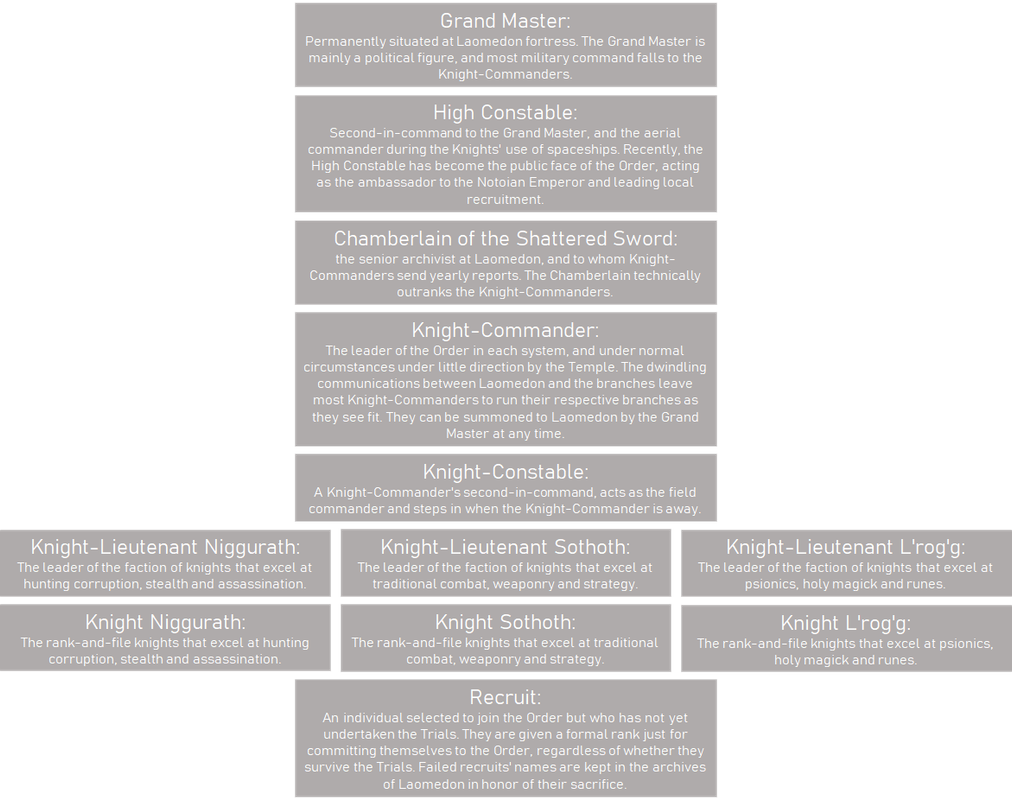
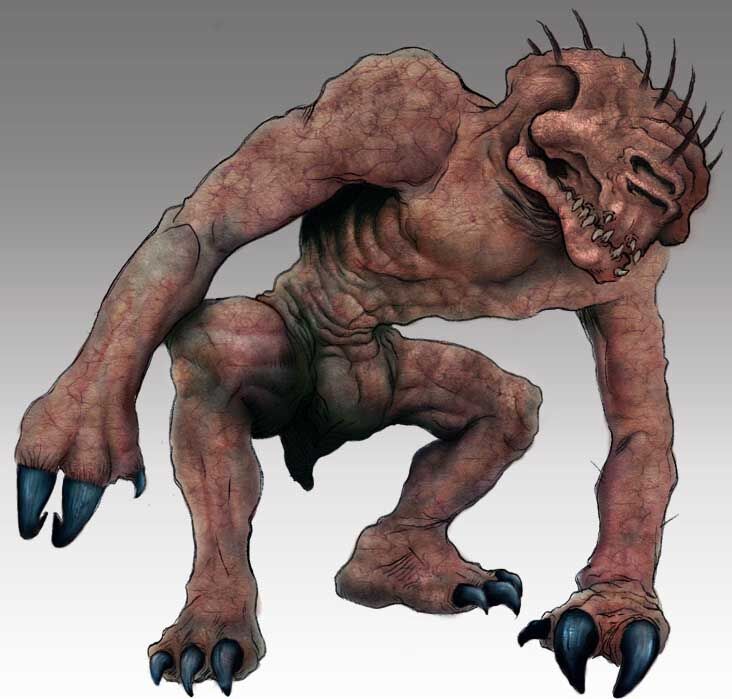
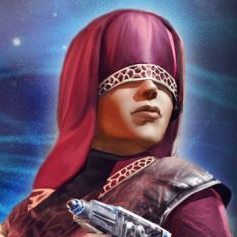
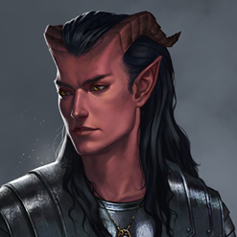
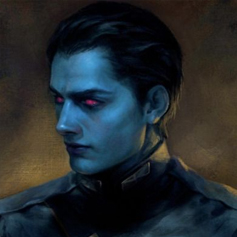


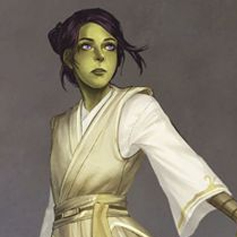
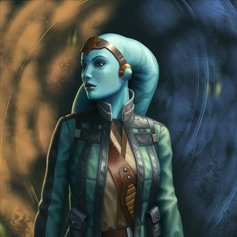

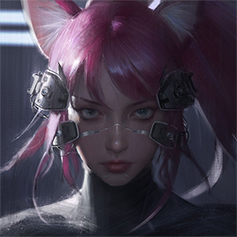



| Gomory: | Ancient Knowledge |
| Zagan: | Biotic Science |
| Sytry: | Defense of the Empire |
| Eligor: | Expansion and Diplomacy |
| Durson: | Imperial Intelligence |
| Vual: | Laws and Justice |
| Scor: | Military Offense |
| Algor: | Military Strategy |
| Sefon: | Mysteries |
| Partas: | Production and Logistics |
| Gamor: | Mel'kor Philosophy |
| Anaboth: | Technology |



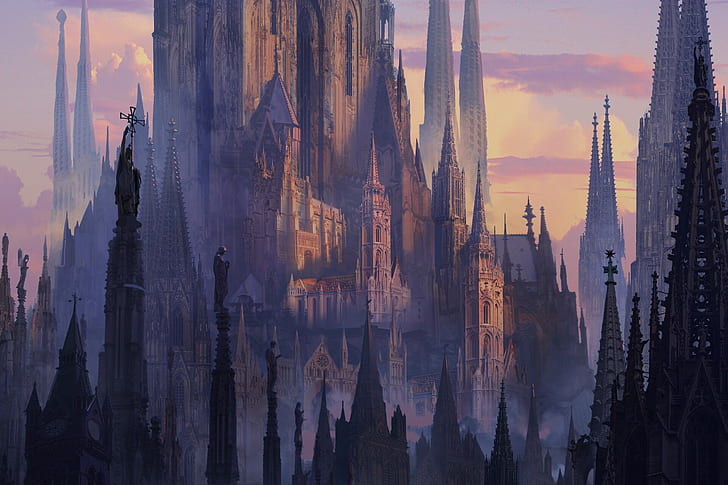






















| Age: | 22 |
| Place of Birth: | Sarouja, Damasque |
| Species: | Eldarïni |
| Family: | Moira (mother, deceased); Uma La'Ahad (father, deceased); Al'Mareinn (adopted father); |
| Class: | Witch |
| Spezializations: | Knight L'rog'g |
| Paraphernalia: | 2x vibrodaggers, PSG-69 (personal shield generator), Insensate Melee D-Power Generator Focus |
| Affiliations: | The Order of the Shattered Hand |
| Appearance: | Whatever prejudice people have of how Eldarïni slaves look, Alen seems to embody. He is both short and lithe, standing at an even 5 feet. His skin is milky pale, his features soft and round. His violet eyes are large and slightly angled, just as his ears are pointed into a tip. This can make others think of Alen as a rare, but exotic, beauty; to combat this, whenever he is in public, Alen tries to dress in uniform-style clothes, often hiding his nimble limbs behind capes and tight leather and technometallic armor. However, for the few who are allowed to see him in private will find the alien has a fondness of softer things, such as silks and loose, flowing fabrics. |
| History: | Alen was born to Eldarïni slave parents in the Damasque Alienage. He has very few memories of his time there. After his mother took her own life, after having been claimed by their master, a fire broke out at the compound, killing most of the Borean noble house. After that, Uma took his son and escaped to the Order, joining them as he raised his son. Uma was executed by the Boreans during the First siege of Lykourgos in 1176, in retribution for him killing a Borean nobleman. Alen frantically called out to his father before the execution, but was prevented from seeing his father's death by Aimahd Sofjan, the Knight who had revealed Uma's name to the Boreans under torture. Crushed by guilt over Uma's death, he infiltrated Alen's quarters some time later, apologized to Alen for his weakness, and committed suicide with a vibrodagger. Alten ran to Al'Mareinn's quarters with haste, informing him of what had occurred. Al'Mareinn told Alen not to disclose anything about the incident to anyone – not even to Aimahd's son Psabbas, who would be shamed by the truth of his father's death. Alen would end up considering Al'Mareinn as more of a father figure than his own biological father, though he was aware that Al'Mareinn's love was "weak and dishonest, and agreed to do as the Knight-Commander ordered. Alen and Psabbas joined the Order as recruits once they came of age, grew up together and became good friends, always at each other's side. Alas, the truth of Aimahd's death ended up coming out, splitting the two friends apart forever. It was in his years as a recruit that Alen find a new companion, the knight Navarro. Unlike most other knights who preferred to work alone, Navarro and Alen seemed to fit each other in a way that seemed almost tele-empathic. Their want to stay together was viewed as a breach of tradition, and it wasn't until the two proved themselves by finding the long-lost Chalice of Oreithyia that their unusual partnership was accepted. |

| Place of Birth: | Aeetes |
| Species: | Humanoid |
| Class: | Witch |
| Spezializations: | Enchantress |
| Paraphernalia: | Seemingly only their clothes, but it has happened that they have pulled out a vibrosword from seemingly nothing when forced to, but otherwise is not afraid to fight empty-handed. |
| Affiliations: | House Eventide |
| Appearance: | Seemingly blending the lines between male and female, Lazari is as much of a mystery as their appearance. Their long hair seems to blend with the long, dark fabrics they wear. Abundance seems to be the keyword when describing Lazari's fashion, several layers of regal fabrics held together by dark gemstones and platinum buckles. There is an otherworldliness to the way these fabrics sway when Lazari moves, it seems almost as if they aren't there at all, and the enchantress is wearing nothing but a cloud of pure darkness. Few get to see the splendor of lingerie these fabrics hide. Their skin is pale white, made to look even more deathly by black lips and makeup. This monochromatism is broken only by their green eyes that can seem pale and dull one moment, and brightly alive the next. |
| History: | The person presenting under the name Lazari at the Eventide court, leaves much to the imagination, easily slipping out of giving any real answers; both as to their identity as the infamous enchantress and anything else about their background. Where the Eventide Matriarch found them is unknown, but for now, it seems their presence has the purpose of steering the young heir, Ancaeus Eventide, on the right track. |


